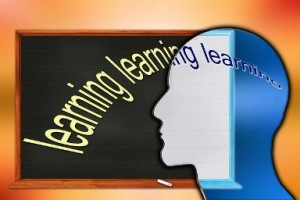
Model…Cue…Prompt…Structure…
Words that form part of the foundations of good solid strategies for people living with brain injury. Just some of the words you will hear and read about.
What do these words mean in real life?
I was thinking about this when I recently found some rough, handwritten notes containing these words I had made some time in the past. More than likely at a conference on brain injury.
Unfortunately, while I thought the notes were useful, there was no source, person, or date noted on the page. Oh dear, common failings of mine, along with a complete inability to keep time logs, or task records. No patience for detail!
“APPROACHES”
My scrawled notes were headed “APPROACHES” and though only a few words I thought I would share and talk about them. I believe they are helpful to understand more about implementing strategies for people with brain injury, in day to day life.
Firstly as an introduction here is exactly what my scrappy notes actually said:
STRUCTURE – creating the environment to support desired behaviour
ROLE PLAY – act out how it should happen
MODEL – demonstrate the correct response or behaviours
PRACTICE- how to deal with difficult situations. How to solve problems. How to do the cognitive stuff. Learning good communication – not too much, not too little.
MINIMIZE CHANGE –
As part of my re-creation of the slip of paper, imagine there is a gap here on the paper – it may be I got so absorbed in what the speaker was saying I missed writing points down, or maybe it is to separate the points above with those below, or maybe I had a little daydream. It is too long ago to recreate but I did think all points seem useful here:
PROMPT – a reminder to do something
SUPERVISE – observe and provide prompts or physical assistance where necessary
GENERALISE – to be able to do something in more than one place
CUE – a signal to do something or to stop doing something.
Even though I have not made extensive notes don’t you think even those few statements are helpful when looking at strategies for people with brain injury? Let me see if I can expand in my own words on what I think it’s all about.
Approaches and Strategies for People with Brain Injury Explained:
These words help build the key approaches we have in our ‘toolkit of support’. The kinds of approaches or strategies, you might use in supporting a person with brain injury to assist them manage the outcomes of their brain injury.
STRUCTURE
The environment is set up and organised around a person to assist them achieve the outcomes they are looking for:
- structuring what is around the person, (their environment) to enable them to carry out a task as independently as possible.
- structure the environment, actions, routines to reduce, or change unwanted behaviours,
- or providing structure to prompt memory.
“Kevin” was a carpenter before he had a stroke. He now has difficulty with planning, organising and carrying out tasks in the correct order. Kevin and Ian, his support person, organised a regular place for each of the tools in Kevin’s shed, with a picture of each tool, where it belonged. Then they made a simple, visual chart for familiar carpentry tasks; the chart lays out the steps to take, and a guide to where the tools for the job are.
ROLE PLAY
Role playing means the supporter (who is teaching) and person (who is learning), practice together how something might happen.The person learns through acting, exploring, observation and copying.
“Dylan” had significant behavioural issues after removal of a brain tumour. He was lonely at school because other children would not play with him. Dylan’s aide would sit with him and they would practice situations that happened in the classroom and playground, so Dylan could explore what was expected of him and learn how to get along with the other children.
MODEL
Similar to role playing this requires a support person to demonstrate the correct way to do something, or to be. The supporter “models” or shows the correct behaviour, or response, whenever it occurs.
“Barbra” had become increasingly egocentric as early onset dementia progressed. Donna a volunteer, who took Barbra out each day, would stand alongside Barbra when they conversed with others and model questions and statements that showed concern for others. Touching Barbra’s arm to get her attention, and stop her talking, Donna would ask the third person “How are you today?”
PRACTICE
Any new skill, whatever we are trying to achieve requires practice. Cognitive impairments such as memory loss, may mean much more long term practice and repetition is needed.
“Tracey” is returning to university after a car accident resulted in brain injury. Tracey cannot remember the transport route to get to university. A fellow student accompanies Tracey every day, so that she can learn the route and practice getting public transport to and from university.
MINIMIZE CHANGE
Most of us know how disruptive and challenging change can be, despite it being a regular part of life. For a person who has cognitive impairment this can be even more difficult. Imagine change when you have trouble remembering things, and you have difficulty learning new stuff.
Try to keep change to a minimum, to what is necessary and provide good preparation for any upcoming changes.
Denis had difficulty with new learning and had become rigid in this thinking following a stroke, as a result he became very agitated if his routine was changed. Denis’s family would begin reminding Denis of upcoming change at least daily in the week prior and record the change prominently in his diary.
PROMPT
Prompting means gestures, words, touch, physical action to assist a person to do something. You might find you need to begin with more prompting, you might need physical touch to guide the person, then as it becomes familiar you might only need the verbal prompt.
“John” had reduced motivation and initiation as a result of alcohol related brain injury. Staff in the home he lived in, would come into his room each morning, they would put a hand on his shoulder to raise him out of bed and say “Good morning John, time to get out of bed and have a shower”. Staff would then assist John by prompting him step by step to shower and dress.
GENERALISE
This is a term to understand and be aware of, rather than an approach one can use. The term ‘generalise’ is used to describe a person being able to carry out a task in a range of situations. After brain injury a person may often find it difficult to transfer learning from one place to another. Often you will see this referred to in the negative “Joey is not able to generalise tasks”.
It is a term to remember when assisting a person learn new tasks, it is best wherever possible to teach a person how to do stuff where they will be doing it, rather than learning in one place and then being expected to carry it out in another. If this is not possible you may need to help the person relearn in each new setting.
“Jenny” was in a rehabilitation centre to re-learn cooking and household tasks. She managed well and independently, but was upset to find when she got into her new apartment she needed to learn many things again.
CUE
A cue is a word or gesture to remind a person to stop, or to start something. Similar to prompting, but less intense.It gives the person the reminder of what is needed, more like a hint.
“Bill” had become impulsive following a traumatic brain injury and would cross the road without looking for oncoming traffic. His support worker would keep his hand gently on Bill’s arm until it was safe and then remove his hand and say “Cross now” which was Bill’s cue that is was safe to cross the road.
And Finally:
So there it is, quite a few thoughts came out of that slip of paper.
What do you think?
Please share any examples, comments, thoughts, questions – anything at all really. It would be great to hear from you.

